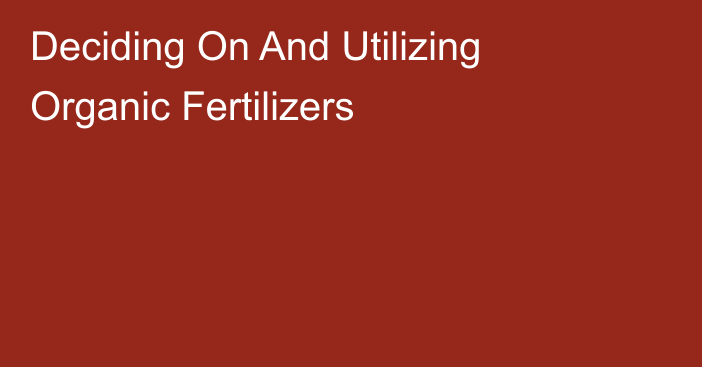
Стоковые изображения от Depositphotos
The numbers on an natural fertilizer label discuss with the concentration (percent) of three major nutrients in the material: nitrogen (or N), phosphate (or P2O5), and potassium (potash, or K2O) (Determine 2). For example, a 6-12-zero fertilizer (bone meal; Figure 2) comprises 6% nitrogen, 12% phosphate (P2O5), and 0% potash (K2O). One-hundred pounds of this materials would include 6 pounds of nitrogen (a hundred x 0.06), 12 pounds of phosphate (one hundred x 0.12) and no potash. Fertilizer labels on organic merchandise have been standardized in order that the concentration of nitrogen, phosphate, and potash all the time appear in the same order on the entrance of the bundle. Other widespread organic fertilizers are listed in Desk 2. Many natural fertilizers also contain other nutrients like sulfur, iron, and zinc; however, concentrations of those are usually not given on the label because ranges are both too low or too variable to be specified. Along with supplying nutrients, common use of natural fertilizers also increases soil organic matter ranges, which improves soil physical properties like water holding capability, drainage, and tilth (the bodily situation of soil related to construction and the convenience of tillage).
Succulents are much like cacti in that they store lots of water of their fleshly leaves and stems, which imply they do not require watering all that often. Tropical plants are used to wetter conditions, and need more frequent watering to survive. The identical is true for newly-established plants, which usually want extra water than plants which have been around for some time as they work to establish their roots.
While you see new development in early spring, apply the primary dose. You can do that every month, but if the plant development is gradual, you can apply a dose within the fall. Remember to add these doses only after the risk of frost has handed, i.e. per week from the final frost.
Synthetic fertilizers have helped triple world grain manufacturing for the reason that 1960s. However producing fertilizer parts, corresponding to nitrogen, requires sources like natural fuel and others. Some components, like phosphorus and potassium, are mined. Only a few countries have the correct mixture of components and access to natural gasoline to economically produce fertilizer. China, Russia, удобрения для растений — eastnovel.net, the U.S., India and Canada are the world’s 5 largest producers of fertilizer, while Russia, Canada, the European Union, China and Belarus are the world’s 5 largest exporters.See the June 30, 2022, report Impacts and Repercussions of Worth Will increase on the worldwide Fertilizer Market from the U.S. Department of Agriculture.
По сообщению сайта Уральская Неделя